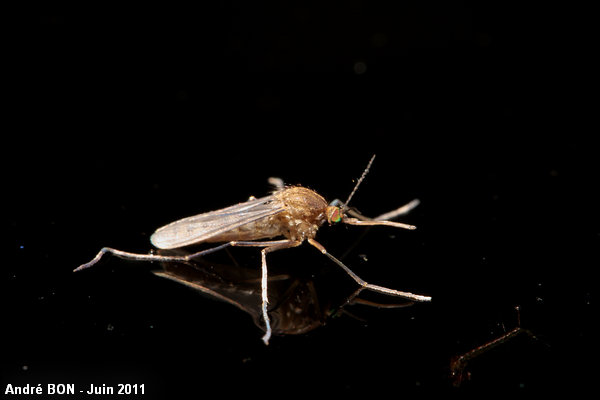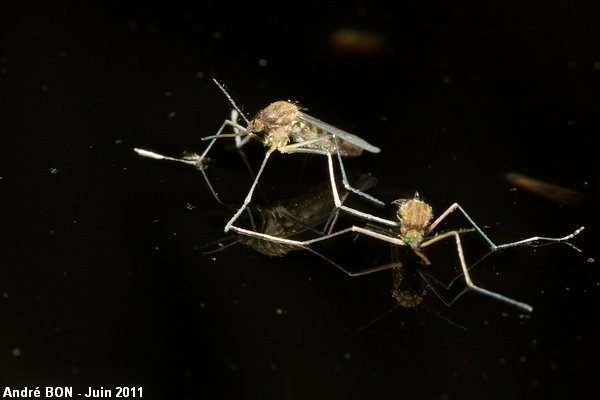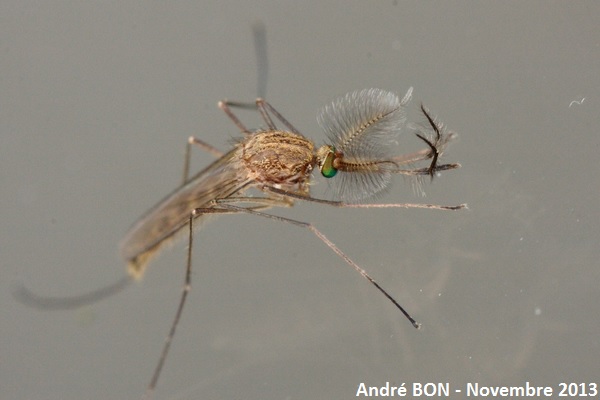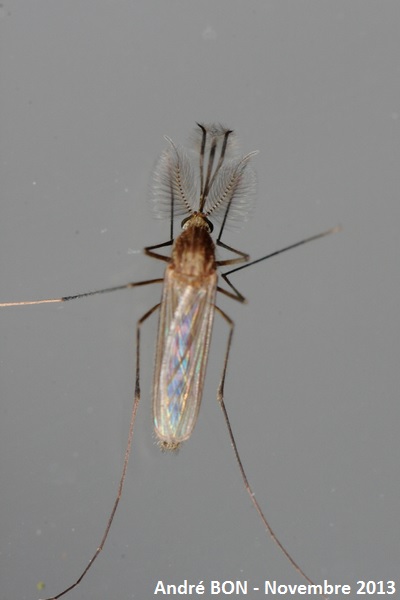



| Common House Mosquito (Culex pipiens (Linnaeus, 1758)) |




|
|
Scientific name: Culex pipiens (Linnaeus, 1758) Common name: Common House Mosquito French name: Moustique commun Order: Diptera Family: Culicidae Wingspan : 5 to 7 mm. Biotope: Very various habitats, a small quantity of stagnant water is enough for the development of the larvae. Geographic area: Europe, Asia, North America, South America. Observation period : All year |
The Common House Mosquito has its wings covered and bordered with scales. They don't show any patch and they very slightly extend beyond the abdomen tip. The legs are long, brown and not ringed. On leg III, the first tarsus is the same length as the tibia. The antennae are thread-like on females and feathery on males. The abdominal tergites are white at the base and then brown. The tip of the abdomen is rounded on females. The thorax, which is rounded on the upper side, is a russet brown colour. The female's palps are much shorter than the proboscis. Females "bite" mammals or birds to suck the necessary blood needed for egg maturation. Males only feed on nectar. The eggs are laid by batches of 200 to 400 at the surface of water. The larvae grow just below the surface. You can tell apart mosquitoes of the Anopheles genus with their resting position, leaning forward with reference to the support, the head aligned with the body. The palps are almost as long as the proboscis. The mosquitoes of the Aedes genus have short palps like mosquitoes of the Culex genus but they show ringed tarsi and the females' abdomen tip is pointed. |
| [To know more about the Common House Mosquito] [Next picture] [Top] |

|
I have shot these pictures at the surface of water, in my rain collector tank. The flash light is a bit too hard and I will try to shoot other pictures with ambient sun light only. I am very confident with the identification of the Culex genus. I am lacking some experience and documentation to confirm the Culex pipiens for sure. You can see one larva on the down right corner of the picture. |
| [To know more about the Common House Mosquito] [Next picture] [Previous picture] [Top] |

|
The thread-like antennae indicate females. |
| [To know more about the Common House Mosquito] [Next picture] [Previous picture] [Top] |

|
The feathery antennae indicate one male. Without any view on the tergites you can only list Culex sp. I will pay attention to this criteria on my future observations. |
| [To know more about the Common House Mosquito] [Previous picture] [Top] |

|
Upper side view. |